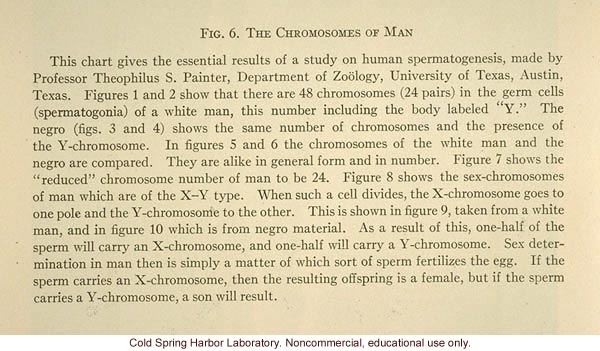Fig. 6 The Chromosomes of Man
This chart gives the essential results of a study on human spermatogenesis, made by Professor Theophilis S. Painter, Department of Zoology, University of Texas, Austin, Texas. Figures 1 and 2 show that there are 49 chromosomes (24 pairs) in the germ cells (spermatogonia) of a white man, this number including the body labeled "Y". The Negro (figs. 3 and 4) shows the same number of chromosomes and the presence of the Y-chromosome. In figures 5 and 6 the chromosomes of the white man and the negro are compared. They are alike in general form and number. Figure 7 shows the "reduced" chromosome number of man to be 24. Figure 8 shows the sex-chromosomes of man which are of the X-Y type. When such a cell divides, the X-chromosome goes to one pole and the Y-chromosome to the other. This is shown in figure 9, taken from a white man, and in figure 10 which is from negro material. As a result of this, one-half of the sperm will carry an X-chromosome, and one-half will carry a Y-chromosome. Sex determination in man then is simply a matter of which sort of sperm fertilizes the egg. If the sperm carries an X-chromosome, then the resulting offspring is a female, but if the sperm carries a Y-chromosome, a son will result.


